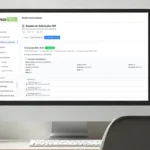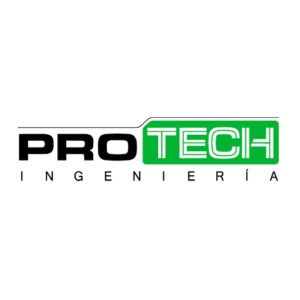What is document management?
Document management refers to the set of practices, standards, and technologies used to manage an organization's documents digitally. This includes both documents received and those created internally. It is essential to maintain the integrity, accessibility, and efficiency of information within an organization, as it replaces traditional paper-based management methods, improving operations and reducing the risks associated with the loss or deterioration of physical documents.
A Digital Document Management System (DMS) is a technological solution that allows for the digital storage, organization, and management of an organization's documents. It functions as a centralized system that replaces the use of physical files, promoting document digitization and facilitating access and searchability. Additionally, it offers features such as version control, workflows, real-time collaboration, change tracking, and access permission management, all essential elements for optimization.
How are digital document management processes executed in your company?
Digital document management involves a set of procedures aimed at the processing, storage, and retrieval of relevant documents and data, specifically in digital format, that are crucial for the internal management of an organization. This process is systematized and detailed, as it seeks to classify and manage electronic files efficiently, enabling proper automation that drives the company toward continuous improvement.
Moreover, the administration of digital document management is carried out through the implementation of technical standards and tools that ensure efficient management of electronic files. This type of management optimizes the use of resources, ensuring that documents are available at the right time and accessible to authorized individuals.
¿Qué es un sistema de gestión documental?
El sistema de gestión documental digital (DMS) es una solución tecnológica que asiste a las empresas en el procesamiento, recolección, almacenamiento, administración y monitoreo de los documentos. Mediante una administración exacta de la información vital de la empresa, puedes establecer procesos que se inicien, ejecuten y finalicen de manera estable, previsibles y cuantificables. En este sentido, es prácticamente inviable diseñar e implementar procesos de negocio y flujos de trabajo digitales confiables sin un sistema de gestión documental digital con todas las funcionalidades.
Some components of the digital document management system are:
The document archiving device: This is where documents and related information are stored. Depending on how you configure your document manager, the repository could be in the cloud or in the local environment. Cloud alternatives are generally more scalable and cost-effective, though the compliance requirements of certain industries may require documents to be stored on internal servers.
A document viewer: This is a fundamental element of the user interface. It's where people can view documents and images on their computers or mobile devices. The most advanced document management systems can view PDFs, JPGs, TIFs, CAD drawings, and other image formats, as well as display electronic documents in their original formats.
Workflow tools: Workflow tools send documents to employees or groups within your company or to clients or business partners outside of it. The best document management solutions offer alternatives to refine and automate workflows in order to save time and resources.
Classification for effective searching: The index information categorizes documents and identifies their types. Indexing makes it easier to move documents through the appropriate workflows and locate them later.
OCR capabilities: OCR stands for Optical Character Recognition. It's a technology that transforms text from images into information that can be used by the corporate system. For example, an OCR tool can extract all the information from a resume and upload it into a candidate tracking system.
Search tools: Search tools help your team narrow down results to find the document they need. Depending on your criteria and system configuration, you'll be able to search by document type, index values, keywords, and full text.
Integration options: Integration options make it easier to use your document management system alongside your accounting system, ERP, or other solutions.
How has digital document management evolved?
You are already familiar with the key elements and description of digital document management, and that there is currently a transition toward cloud-based solutions. Now, let’s look at its progress. The initial phase involves the basic systems for document collection and storage. The second stage entails the implementation of advanced systems that manage company-wide content. Finally, the third stage encompasses content services, with special focus on interconnection.
1. Syncing and Sharing Company Files
This is the most basic and cost-effective system for syncing, storing, and distributing documents, images, and videos across multiple tablets. Some solutions also facilitate document distribution and version tracking. However, the simplicity of this system has its limitations: it provides only restricted or no control over workflows.
2. Enterprise Content Management (ECM)
These systems maintain a stronger connection with a company’s procedures and processes, making them suitable for content management and achieving corporate goals. Companies gain the ability to collect, store, organize, access, and disseminate information. Additionally, these systems are deeply integrated into a company’s IT infrastructure, focusing on process improvement and workflow automation.
3. Modern Content Services
Content services consist of an ecosystem of smaller systems or applications with specific objectives. Content service platforms have their own directories and can easily link to other applications via an API.
Current content services represent the perfect balance between the two previous levels: they are cost-effective while simultaneously providing customized solutions to improve specific processes.
What are the advantages of document management?
Desks filled with piles of paper and shelves overflowing with files remain common in many offices. The result is the typical office work where searching for and filing documents becomes a waste of time and resources. The solution to this inefficient workflow lies in the benefits of a digital document management system:
1. Less paper: reducing costs and effort through digital document management.
This is the first step towards becoming a paperless office and eliminating inefficient paper document management processes:
-
Time is saved when searching for files, and content can be easily organized and identified. This gives you more time for value-added activities.
-
There's no need to create multiple versions of the same document for sharing. Instead, one master version is stored centrally and can be easily retrieved.
2. Compliance and protection through a document manager.
Properly storing critical documentation is essential to ensure business continuity. Additionally, it ensures that customer relationships are not threatened due to the loss of relevant information.
With a document manager, confidential information is protected and safeguarded while being shared within the company (audit-proof document management). It provides strong data protection thanks to robust disaster recovery strategies.
-
Control access to documents.
You have control over who can view, modify, and distribute data by granting user and administrator rights. For example, if a contract is solely for a specific sales employee, you can set the appropriate access rights.
-
Prepared for worst-case scenarios.
Recomendaciones para la gestión de documentos:
Los centros de datos no funcionan, los desastres naturales ocurren sin previo aviso: solo hay que tener en cuenta las inundaciones o los incendios en los bosques. Si todos sus archivos se encuentran en un archivador o en un disco duro, inevitablemente se perderán. -
Protect your data.
Lastly, you can be sure that your data complies with current GDPR regulations. Non-compliance with these regulations can result in severe penalties.
3. Quick and Easy Integration
Integration between applications and platforms is simple and ensures secure and smooth data exchange among individuals. These systems can also merge with existing systems, ensuring a consistent document infrastructure and the automation of processes. Additionally, it is possible to manage multiple systems.
4. Improved Productivity and Automation in Key Areas of the Company
A document manager solves this problem by facilitating the capture, storage, processing, and retrieval of documents, as well as automating workflows. In fact, when automation tools are available across the organization, certain business areas benefit particularly.
5. Work from Anywhere: Flexible Work Regardless of Location
In the contemporary workplace, there is much to be said for a self-managed work model, both in terms of location and time. Employees appreciate the numerous benefits of working from home, such as saving time and money by not needing to commute to the office and creating an ideal balance between professional and personal life. However, businesses themselves also benefit from this principle and can save significant amounts of money.
6. A Document Manager Guarantees Greater Sustainability for Environmentally Responsible Companies
We’ve already highlighted the potential financial savings from paper, a resource that is becoming increasingly expensive. However, of course, every sheet of paper that doesn't need to be consumed through a document manager also benefits the natural environment. Considering that each worker "prints" an average of 0.68 trees worth of paper annually, the scale of potential resource savings is more than evident. Additionally, digital transformation and process automation through a document management system enhance the company's sustainability.
Transform your business today!
We are ready to help you take the next step toward more efficient and modern document management!








